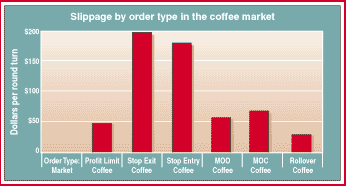SYSTEM DESIGN
Additional Costs Can Affect Your Bottom Line
Frictional Costs In Futures Trading
by Jesse Wolff
If we could trade in a perfect, cost-free world, there would be many more systems that would exhibit profitable return profiles. But we don't. So what can we do about frictional costs?
The futures market is not a zero-sum game, and there is a level of friction - that is, cost - that must be accurately reflected in the research process and resulting profit/loss profile of any system being developed. This cost will vary depending on various factors, including the contract size of the market traded, the trading medium (electronic vs. floor brokers), the frequency of trading, the type of order used, how that order is placed in the market, the specific trading strategy, the bid/offer spread, the time of day, day of the week, brokers used, and skill of the trader - and more. The list goes on.
When modeling a market or set of markets, you must burden the system with conservative cost assumptions at the outset before the parameter selection process begins. These higher costs will play a significant role in determining if a system has potential and what the optimal parameters are.
SLIPPAGE
Frictional costs based on market, order size, and type are a key component in system design and portfolio market composition. One such cost is slippage, which is the difference between the calculated price a system creates for an order versus the actual price level(s) at which the order is filled. It is important to have a historical database tracking actual slippage by market, system, and order type (Figure 1). For example, an order of approximately 50-75 lots of coffee can incur around $200 slippage per round turn on stop-exit orders, while a profit-based exit limit order for coffee, at that same order size, might have slippage of only $45. Figure 2 displays the "potential" slippage levels of various markets by order type. If a real-time database of historical slippage is not available, substitute conservative assumptions. The selected slippage values should reflect a firm's true trading costs based on the trading strategy being employed.

Figure 1: Slippage by order type in the coffee market. Different types of orders can have varying slippage.
...Continued in the April 2002 issue of Technical Analysis of STOCKS & COMMODITIES
Excerpted from an article originally published in the April 2002 issue of Technical Analysis of STOCKS & COMMODITIES magazine. All rights reserved. © Copyright 2002, Technical Analysis, Inc.
Return to April 2002 Contents